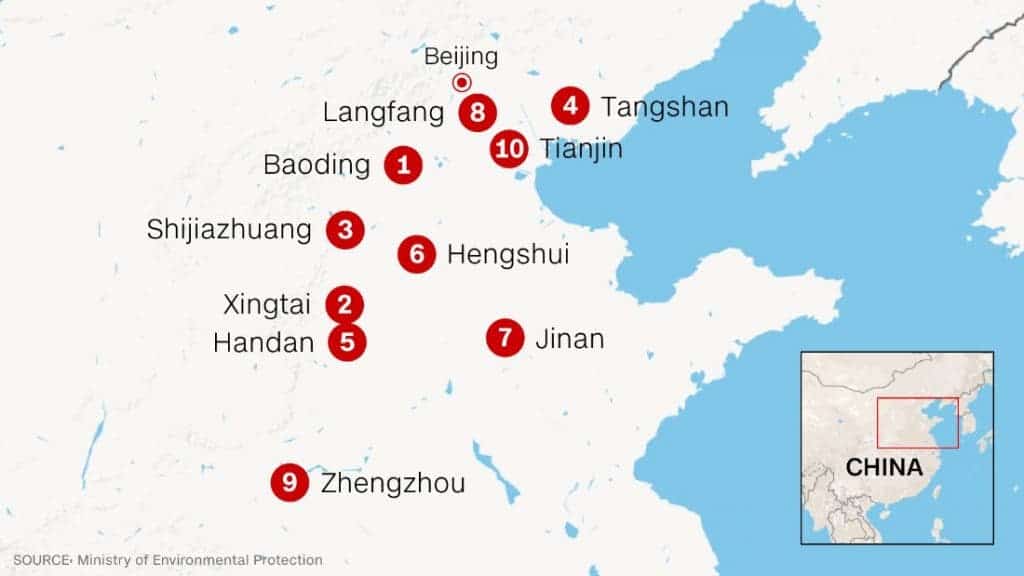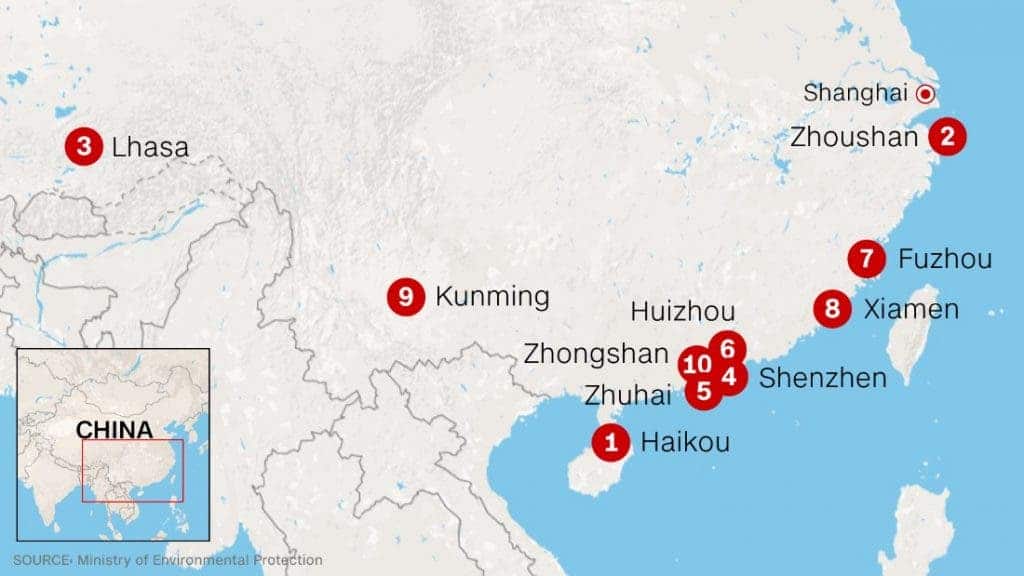A whopping 66 out of the country’s 74 major cities don’t meet the basic air quality requirements, China’s Ministry of Environment said in a report they released. Beijing, the country’s capital, is actually the 8th most polluted city of the country.

China has a long standing history with pollution, and despite some laudable measures being taken recently, the situation won’t improve in the near future. China’s economy, massively powered by coal, has led the country towards an environmental disaster. China has more lenient standards than the rest of the world, but even so, cities aren’t meeting their own standards. What’s interesting is that the number of cities fulfilling the basic air quality requirements actually grew from 3, to 8 – so things are getting better, but extremely slowly.
The worst cities were in the industrial province of Hebei, near the capital Beijing, where the average reading of PM2.5 (tiny particles which can reach the lungs and cause diseases) was 93 micrograms per cubic meter – the country’s standard is 35, while the World Health Organization recommends a level of 25. Beijing itself was the 8th most polluted city.

Haikou in the island province of Hainan — sometimes called China’s Bali — had the best air quality, closely followed by the Tibetan capital Lhasa coming third,
All in all the situation is pretty dire – and while the Chinese government has committed to lowering the amount of emissions, it’s expected that it will take several decades before the pollution levels reach “normal” levels. Even if all pollution stopped today (something which of course, isn’t going to happen), the effects would still take a while. But what I do find encouraging is that China is taking (small) steps towards transparency. The fact that they are releasing reports admitting that they don’t respect their own standards is, in itself, an achievement. Now, it remains to be seen if the Chinese behemoth industry can reduce its emissions and ensure a healthier future for the citizens.






